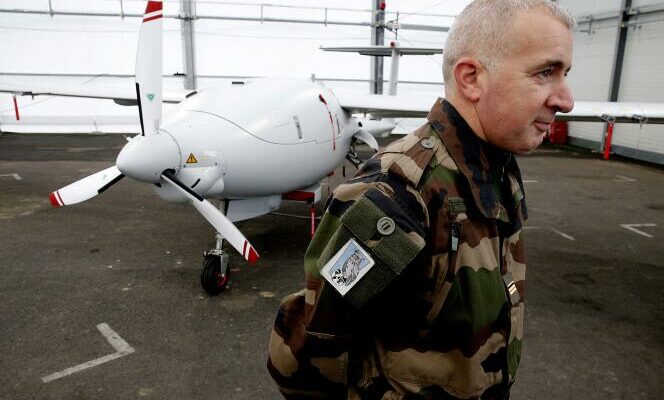The cold is bitter and the sky powdery on this December day, based on 61e artillery regiment (61e RA), near Chaumont (Haute-Marne), where the new Army Drone School was officially inaugurated at the end of October. Their hands reddened by the cold, their eyes glued to their controller and their control tablet, several new instructors meticulously carry out the piloting exercises entrusted to them.
On one knee on the wet asphalt, Lucie, a young brigadier-chief, must scrupulously inspect the facade of an abandoned building with a microdrone which looks like a small helicopter while one of her comrades must “open” the way for a Jeep on a narrow road while piloting its drone from the rear seats, to spot possible explosive devices. Everyone must be able to repeat these maneuvers under fire. “We are looking for people capable of great control over stress and emotions”explains Captain Frédéric, general director of training at the school.
These school trainees already have “instructor” level. They are there to update their knowledge to then be able to disseminate their knowledge throughout the regiments, the army having fallen years behind in the field of drones. “Before, only a few specialists were able to handle drones, now the goal is to promote commonality”explains Lieutenant-Colonel Jean-Louis Bourgeois, appointed head of the school since the summer.
The Patroller not yet operational
The new School is not a creation ex nihilo. A training center dedicated to drones had already existed, for around ten years, within the 61e artillery regiment. This is evidenced by the old models of drones from the 1960s and 1970s which hang around the parade ground of this former American air base built in 1952. But, given the intensification of the use of drones in all theaters of war, the Ministry of the Armed Forces has decided to transform this center into a real training center, attractive to young recruits. Some 30 million euros will thus be allocated to the school by 2030, within the framework of the military programming law, passed in July.
In five years, the number of training courses provided at the Chaumont base has indeed exploded. From around fifteen in 2017, they increased to more than a hundred between 2022 and 2023, or around a thousand trainees per year of all levels. A rise in power which goes hand in hand with the gradual increase in the number of drones in the regiments: around 2,200 today, more than 3,500 by 2025. Which, in the army’s counts, should ultimately make it possible to display the figure of 4,000 to 5 000 “operators” who can be mobilized if necessary.
You have 55% of this article left to read. The rest is reserved for subscribers.
